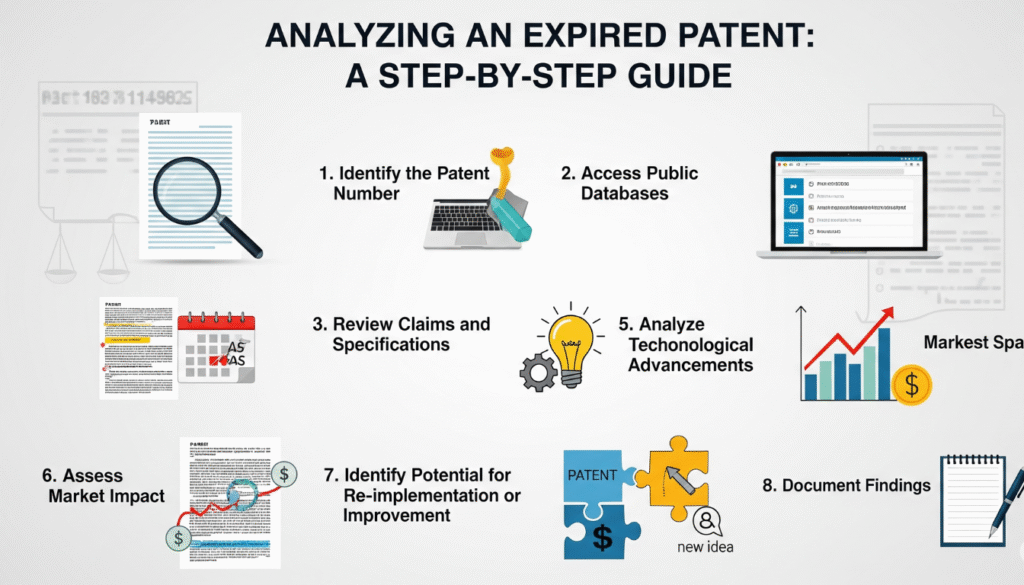Follow this step-by-step process to evaluate expired patents and find the best opportunities for your business.

Why Analysis Matters
Not every expired patent is worth your time. A structured approach ensures you invest in inventions that are both legally safe and commercially viable.
Step 1: Confirm the Patent Status
- Use USPTO, WIPO, or Google Patents to verify that the patent is truly expired.
- Check related patents (patent family) to make sure none are still active in your target market.
Step 2: Understand the Invention
- Read the abstract and claims section to identify what is actually protected.
- Study the drawings and descriptions for functional details.
Step 3: Assess Market Potential
- Search for existing products using the same concept.
- Use Google Trends, e-commerce platforms, or industry reports to gauge demand.
Step 4: Evaluate Technical Feasibility
- Can it be produced with today’s materials and technology?
- Are there cost-effective manufacturing options available?
Step 5: Identify Improvement Opportunities
- Can you make it more eco-friendly, durable, or user-friendly?
- Could you integrate modern features (e.g., smart tech, automation)?
Step 6: Plan Your Commercialization
- Decide whether to sell directly, license to others, or integrate into an existing product line.
- Prepare a brand and marketing strategy before launching.
Example:
A small design studio analyzed an expired patent for a foldable kayak. They found strong demand in the outdoor market, updated the materials to lightweight composites, and launched via crowdfunding—raising over $200,000 in pre-orders.
Pro Tip: Keep a database of analyzed patents—even if you don’t act on one now, it might become valuable as market trends shift.